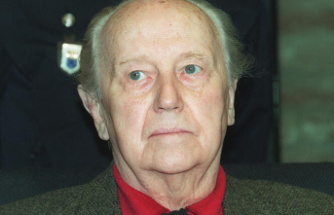Losing weight seems so easy - theoretically: just eat less and preferably move more, i.e. use more energy. But how do you keep track of your calorie intake, what does energy density say and what are "empty calories"?
The math seems simple: if you want to lose a few pounds, you should consume fewer calories than you burn. But how exactly do you approach counting calories? Let's start with the basics: A person's daily energy consumption can vary greatly. "Depending on how old you are, what job you do, how much sport you do and how active your lifestyle is," explains Astrid Donalies. She is an ecotrophologist and public relations officer at the German Society for Nutrition (DGE).
The body's energy needs consist of two components. First there is the basal metabolic rate, i.e. the amount of energy that the body needs when it is at rest. Then there is the power turnover. This is the energy requirement that is added to the basal metabolic rate, for example through hard physical work or sport.
For example, a 40-year-old woman who is 5'7" and weighs 140 pounds has an approximate basal metabolic rate of 1385 calories per day. If she works eight hours in the office, walks for 20 minutes and jogs for 30 minutes, her energy expenditure increases to about 2300 kilocalories.
According to Astrid Donalies, counting calories is recommended for people who want to lose weight, "because it often helps them to realize how much energy the meals distributed throughout the day actually provide them with." You should not only note how much of what you eat, but also in which situation. "Because the habitual snacks often play a major role, which can also add up again," says Donalies.
For example, the glass of white wine that you treat yourself to in the evening has around 140 to 190 kilocalories due to its alcohol and sugar content. That's as much as a small pretzel.
Another argument in favor of counting calories is that it is easier to recognize so-called "empty calories" in food. They often hide in products that offer a decent amount of calories but few other nutrients such as vitamins and minerals. "These are sweet drinks, white flour products and sweets like chocolate, cake or gummy stuff," says Donalies. "You may be snacking on more empty calories between meals than you realize."
If you keep in mind what he or she eats, you often eat more consciously. And has an easier time eating fewer calories. That says Matthias Blüher, board member of the German Obesity Society (DAG). Under one condition: "It is important that you are honest with yourself when tracking calories and don't fool yourself," says Blüher. So the piece of chocolate cake belongs in the list as well as the raw food plate. Self-control is easier when you cook for yourself.
According to Blüher, there are a lot of tools like tracking apps or recipe sites that show the calorie content. And of course: "The nutritional information on the back of the food packaging or the Nutri-Score - they make it easier not to lose track in the calorie jungle," says Blüher.
"I would advise beginners, for example, to measure the rapeseed, linseed or olive oil with a teaspoon or tablespoon," says Donalies. "An orientation aid can also be to be clear about how much energy is in carbohydrates, proteins and fat," says Matthias Blüher. Protein and carbohydrates provide four kilocalories per gram, fat even nine, alcohol seven. Fiber also provides energy, but only two kilocalories per gram.
In addition to the number of calories in food, the energy density can also be a helpful orientation value. It indicates how many kilocalories are in one gram of a certain food or product.
It is calculated by dividing the calorie content of a given amount of food by its weight. For example, 100 grams of apple contain 50 calories. Dividing 50 by 100 gives an energy density of 0.5. For comparison: the energy density of a croissant is around ten times higher.
With all the counting, however, one thing should not be neglected: enjoyment. "Of course, all the tracking and documentation can lead to a certain amount of stress," says Donalies from the DGE. Also to social stress with family, friends or work colleagues. "Losing weight should be socially acceptable," says the ecotrophologist.
Counting down to the gram and the calorie is often not the reality of life. It can be easier to set benchmarks, for example 1700 calories per day, and then combine them spontaneously. "Since every day looks different in detail, that is often more promising," says Donalies.
You should also be aware of the pitfalls after weight reduction. Even sticking to a calorie deficit doesn't always have the desired effect. "You have to imagine that our brain adjusts the weight of the body very precisely and can keep it constant very well - regardless of whether I eat a lot or very little," says Matthias Blüher.
According to Blüher, the mechanisms that lead to the rapid regain of weight after losing weight are often out of our control. It can happen, for example, that hormones affect the fatty tissue and digestion.
The feeling of appetite and satiety is therefore strongly controlled by factors that we cannot actively influence. This sometimes makes it difficult to establish behavioral changes. You should be aware of this and, if in doubt, perhaps get a nutritionist with certification on board.
(This article was first published on Sunday, September 04, 2022.)












